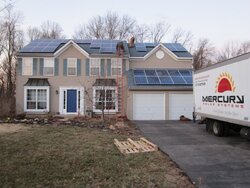Dune said:
I hear that. There are a few other models out there as well that should be available this year or next. A couple more japanese and a few european options as well. G.M. kind of blew it with their 40 mile electric range, hopefully they will figure that out, before they get crushed. The thing with the battery replacement cost is that it is offset by not ever having to fix; ignition, exhaust, carberation/fuel injection, radiator/hoses/waterpump, fuel tank, lines, filters, oil change, engine maintainence, etc. Electric motors are incredibly robust and should last for millions of miles.
Yea, despite apparent complexity given the high tech nature of the electric cars, they are actually quite a bit less complex than a gas car. I love the idea of never again having to worry about gas, fuel filters, fuel pumps, fuel lines, fuel injectors, evap systems, canisters, catalytic converters, rusting mufflers, exhaust leaks, air filters, throttle bodies, pcv valves, spark plugs, O2 sensors, Mass Air Flow Sensors, timing belts, oil changes, oil leaks, burning oil, engine compression, etc. 95% of "check engine light" issues would be GONE. Electric motors are beautiful in their simplicity. These cars are also surprisingly efficient too, 4-5 miles per kilowatt hour:
http://avt.inel.gov/pdf/fsev/costs.pdf
So say you drove 10,000 miles a year (I drive twice that unfortunately), with a gas powered car that got 30 miles per gallon and you used $3 for the cost of a gallon of gas, the cost would be 10,000 / 30 * $3 = $1000. With an electric vehicle that got 5 miles per kw hour, and 10 cent per kw hour cost of electricity, you are talking a cost of: 10000 / 5 * $0.10 = $200. So that's $800 per year in fuel savings alone for the average American. Since I drive twice that distance, I'd be saving $1600 per year, and that doesn't take into account that I might be able to get a large chunk of my electricity for "free" from the solar panels, which could mean an electric car could save me over $2000 in fuel costs every year. But then again I could probably find a very nice used fuel efficient gas commuter car for around $8,000, compared to possibly $35,000 for a new electric car! Perhaps a year or two from now the electric cars will sell for $25,000 with a government incentive maybe bringing the price down to $21,000. Even with the fuel savings, and that big discount it might not make financial sense...


 . I would never do a passive solar house again. While I like the light and the sun in the winter, I'd spend my money on closed cell foam rather than the envelope system I have now. 2 walls of glass with a 1foot airspace in between, that hot air circulates thru a floor of cinder blocks. It doesn't work very well, I doubt I get enough heat out of it to pay the electric bill for the fan blowing the air. I also have Solar domestic hot water, 2 3 by 8 panels, been there since 1990, never had an issue, works great. I'm presently building a collector into a south facing wall of my new shop, can't wait to see how much it contributes to a 30 by 34 well insulated shop . radiant floor hooked to a homemade 9 by 15 collector. I'm hoping it keeps the space above freezing.
. I would never do a passive solar house again. While I like the light and the sun in the winter, I'd spend my money on closed cell foam rather than the envelope system I have now. 2 walls of glass with a 1foot airspace in between, that hot air circulates thru a floor of cinder blocks. It doesn't work very well, I doubt I get enough heat out of it to pay the electric bill for the fan blowing the air. I also have Solar domestic hot water, 2 3 by 8 panels, been there since 1990, never had an issue, works great. I'm presently building a collector into a south facing wall of my new shop, can't wait to see how much it contributes to a 30 by 34 well insulated shop . radiant floor hooked to a homemade 9 by 15 collector. I'm hoping it keeps the space above freezing.